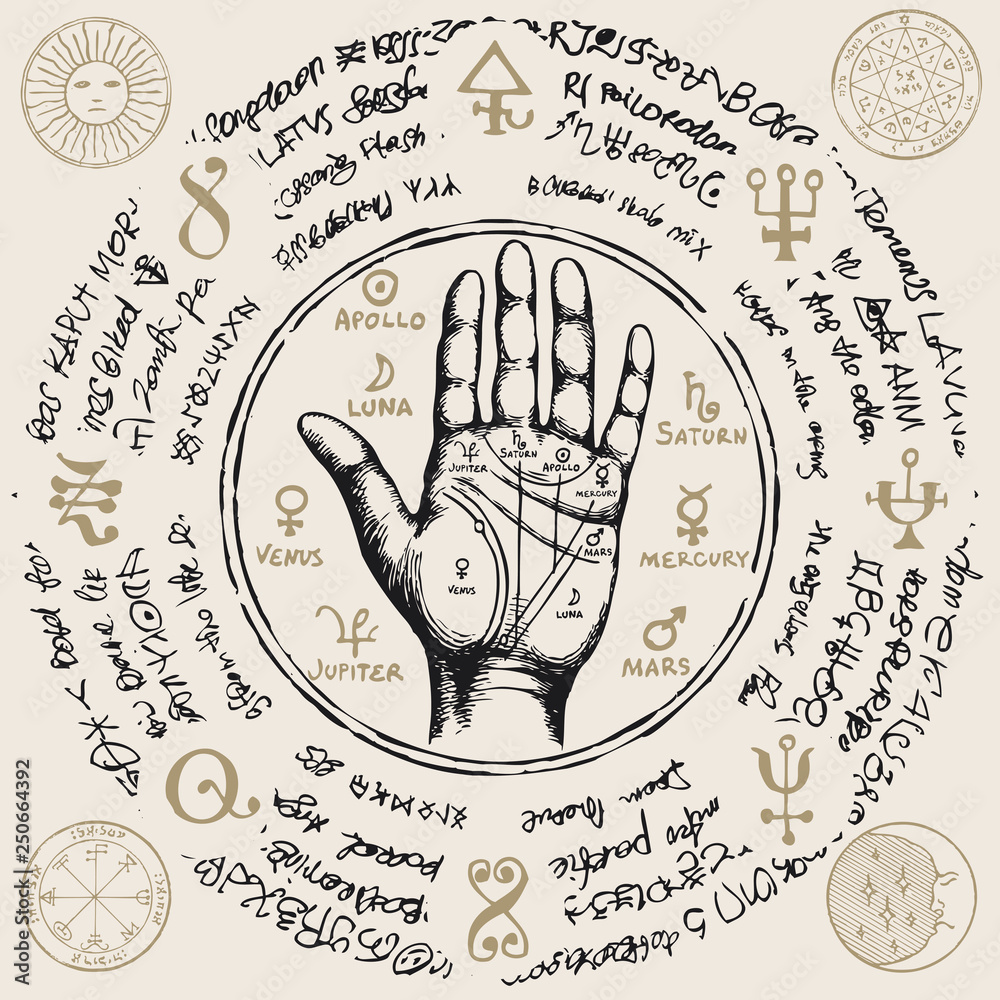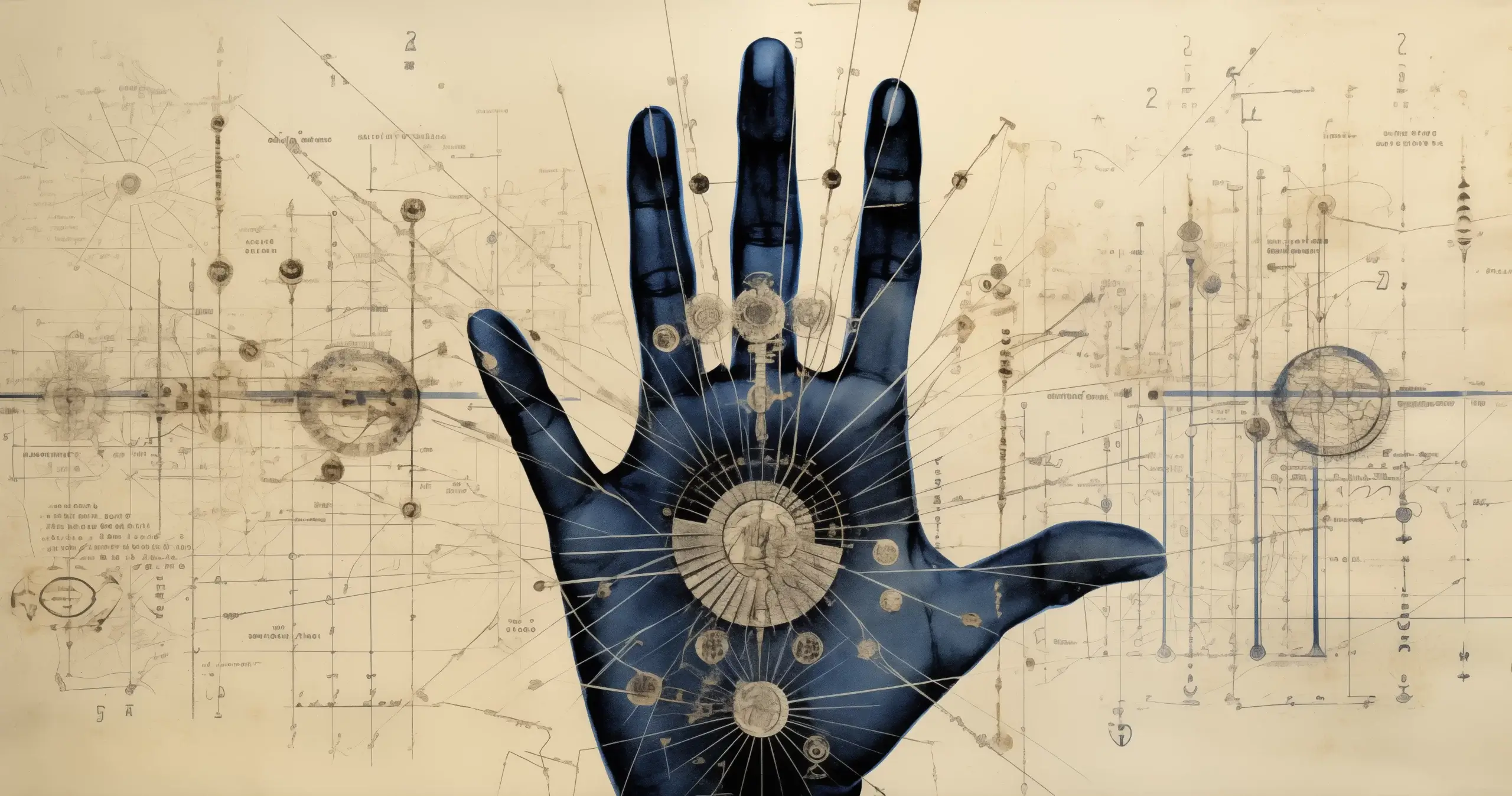Palmistry: History & How to
Palm reading, also known as palmistry or chiromancy, is an ancient practice that interprets character and predicts the future through the study of the palm. Its roots can be traced back to various cultures, including Indian, Chinese, and Egyptian civilizations.
History of Palm Reading
Ancient Origins
Palmistry’s origins are shrouded in mystery, but it is believed to have begun in ancient India, spreading through the Eurasian landmass to China, Tibet, Persia, Egypt, and Greece. In ancient India, it was considered a part of Hindu astrology, with references found in the Vedic texts.
Expansion and Evolution
The practice spread to China, Tibet, Persia, and Egypt, evolving with cultural nuances. In China, palm reading became intertwined with I Ching, the classic book of changes. In ancient Greece, Aristotle allegedly wrote a treatise on palmistry, which was then used by Alexander the Great to judge the character of his officers.
The Middle Ages and Beyond
During the Middle Ages in Europe, palmistry was suppressed by the church, but it saw a revival during the Renaissance. By the 17th century, it had resurfaced in Western culture, although it often faced skepticism and criticism from scientific communities.

Understanding Palm Reading
The Four Types of Hands
Palmistry categorizes hands into four types – Earth, Air, Fire, and Water, each associated with different character traits. Earth hands are characterized by square palms and fingers, thick or rough skin, and a ruddy color. Air hands have square or rectangular palms with long fingers and sometimes protruding knuckles, with dry skin. Fire hands have a square or rectangular palm, flushed or pink skin, and shorter fingers, while Water hands are characterized by long palms, long fingers, and many fine lines on the palm.
Major Lines in Palmistry
- The Heart Line: Runs horizontally across the upper palm, reflecting emotional stability, romantic perspectives, depression, and cardiac health.
- The Head Line: Separates from the life line and runs horizontally, symbolizing the style of thinking, will, and intellect.
- The Life Line: Curves around the base of the thumb, indicating vitality, general well-being, physical health, and major life changes.
- The Fate Line: Also known as the line of destiny, not everyone has this line clearly visible. It indicates the degree to which a person’s life is affected by external circumstances beyond their control.
Other Features
- Minor Lines: These include the Sun Line, Mercury Line, and others, offering more insights but are not universally present or clear in all hands.
- Mounts: Raised pads of flesh beneath each finger.
- Finger Shapes and Nails: Also provide additional insights.
How to Read Palms
- Start with the Dominant Hand: The dominant hand provides insight into the present life, career, and conscious thoughts, while the non-dominant hand reveals personal relationships, dreams, and subconscious thoughts.
- Examine the Lines: Begin with the major lines. Check their depth, length, and curvature to interpret emotional and physical well-being.
- Look at the Mounts and Fingers: The mounts under each finger should be looked at for additional insight. The shape and length of the fingers also hold significance in character analysis.
- Consider the Shape and Texture of the Hand: The overall shape of the hand and the texture of the skin play a role in providing a complete picture.
- Note the Minor Lines and Marks: These can provide more detailed insights but may require more detailed study and expertise to interpret.
Conclusion
While palm reading has been regarded with skepticism by many in the scientific community, it remains a popular and fascinating aspect of folk psychology and culture. Whether you view it as a tool for introspection or a form of entertainment, palmistry offers a unique perspective on personality and life’s potential paths.







